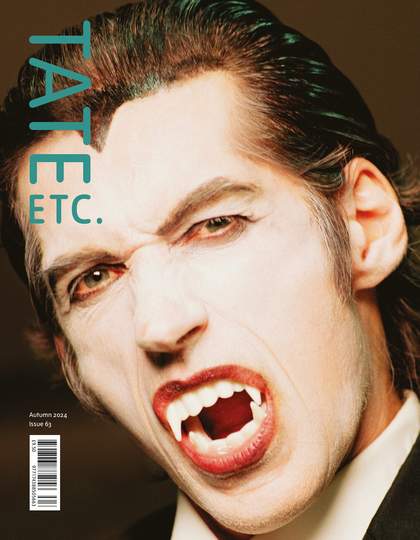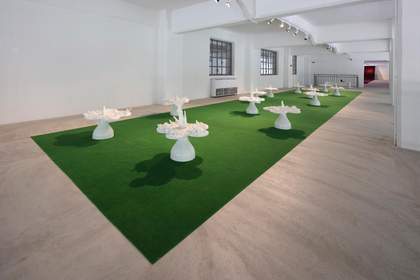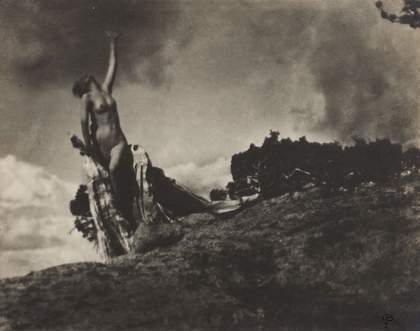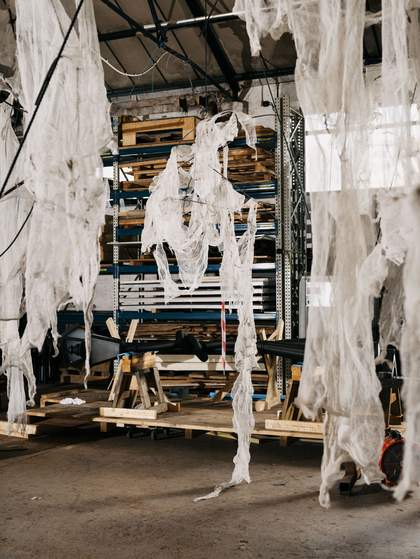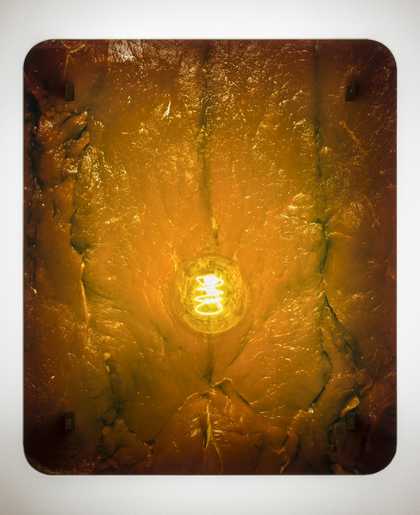
Helen Chadwick
Enfleshings I (1989)
Tate
In her 1989 book Enfleshings, the artist Helen Chadwick identifies herself as ‘conscious meat’. In fact, this was her way of describing selfhood in general: an animacy of red matter. Bled across the book’s cover is an artwork she’d made that year as part of her ‘Meat Lamps’ series. The work is a rectangular lightbox called Enfleshings I. In it, a puckered slab of meat, vaguely matching a human trunk, is brightly lit at the navel by a round electric bulb.
Chadwick claimed at the time to be interested in defying the ‘opposition of mind and body’. The idea that the body can think – that the flesh can have bright ideas – by now seems obvious enough. But Chadwick didn’t use the human body for this work; she requisitioned animal meat – that which has been ‘enfleshed’ by the electric current of life only to be switched off, skinned, and sold. In this sense, the work speaks to more contested oppositions: human and animal, self and other.
In a 1990 symposium, Chadwick proposed that even the word, ‘enfleshings’, marked a kind of impossibility – the creation of flesh was a miracle, reserved for the likes of Frankenstein and Christ. And yet, as the work (itself a creation of flesh) would seem to suggest, we humans choose every day who we ‘enflesh’ and who we make into meat.
When in October last year, Israeli defence minister Yoav Gallant claimed to be ‘fighting against human animals’, the statement implied a specific, if dominant, view of what ‘animals’ are. In a different context, the phrase ‘human animal’ might designate very little – more a taxonomical narrowing than term of humiliation. When Gallant spoke of ‘human animals’, though, what he called into being, was the idea of human meat. We have seen this in the form of shredded limbs, dangling from bombed-out buildings; pieces of human stuff transferred from pavements to plastic bags. Where Chadwick’s ‘Meat Lamps’ depend on electricity, ‘human an- imals’ in Gallant’s view, deserve ‘no electricity, no food, no water, no fuel’. These are meat-making decisions.
A human is always born human, always already a human animal. Nobody – human or otherwise – is always already meat. Meat is the manifestation of a force, perhaps brute or more subtle, but always one of power.
A non-human animal may be born free or bred as anticipated meat. They may live in relative freedom or be hunted into meathood. There are many (if not unrelated) forms of violence that make for meat – colonial, genocidal, patriarchal, capital- ist, speciesist. And yet, whatever the frame of meat production or depth of malice involved, there is no meat on this earth that was not once flesh, electrified and knowing.
Enfleshings I was purchased in 1994 and is included in Artist Rooms: Helen Chadwick, Tate Modern, from 30 September.
Amber Husain is a writer, academic and publisher who lives in London. Her latest book, Meat Love: An Ideology of the Flesh, is published by Mack Books.

